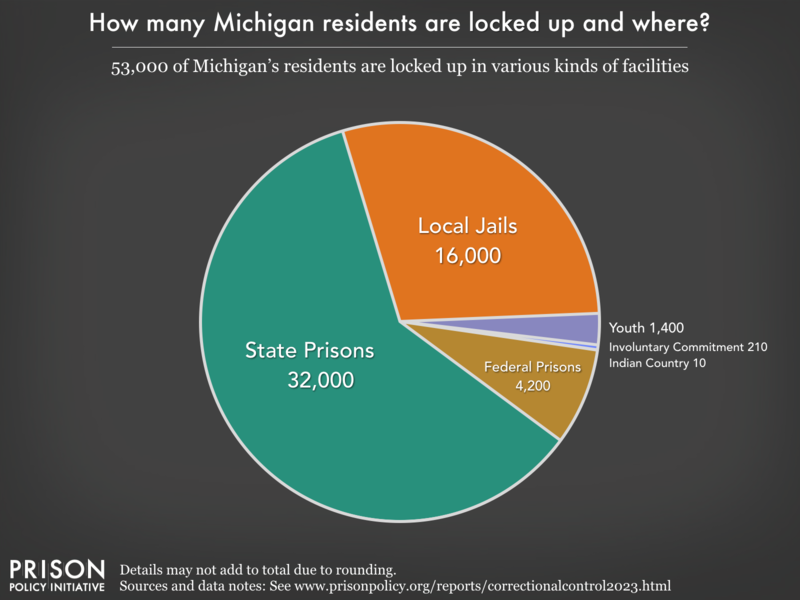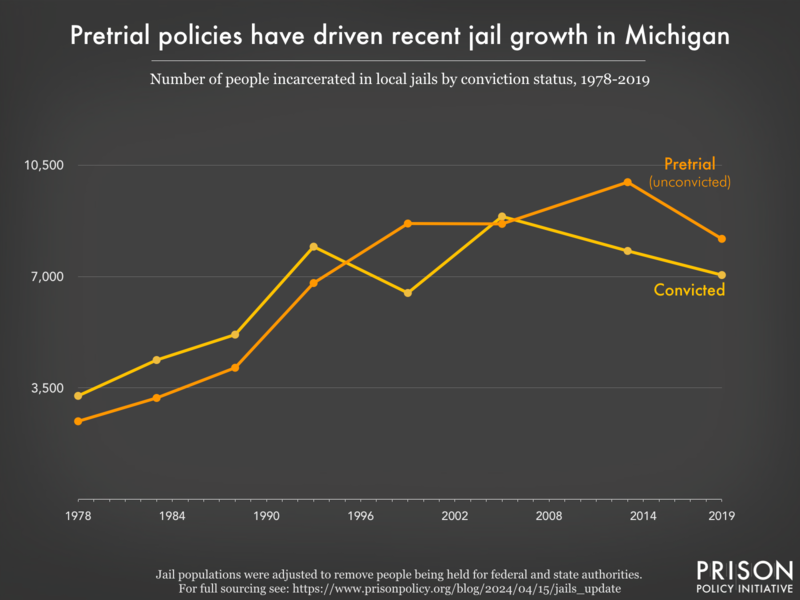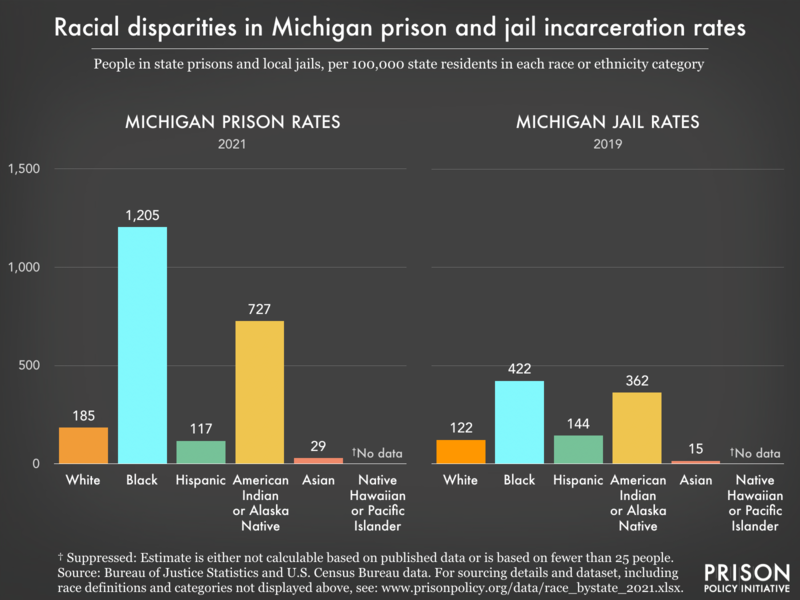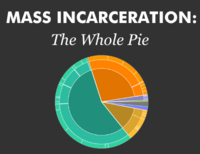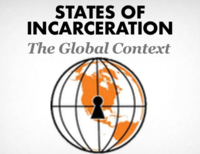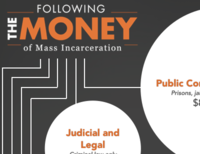Thank you,
—Peter Wagner, Executive Director
Donate
Michigan profile
Michigan has an incarceration rate of 535 per 100,000 people (including prisons, jails, immigration detention, and juvenile justice facilities), meaning that it locks up a higher percentage of its people than almost any democratic country on earth. Read on to learn more about who is incarcerated in Michigan and why.
53,000 people from Michigan are behind bars
Additionally, the number of people impacted by county and city jails in Michigan is much larger than the graph above would suggest, because people cycle through local jails relatively quickly. Each year, at least 163,000 different people are booked into local jails in Michigan.
Rates of imprisonment have grown dramatically in the last 40 years
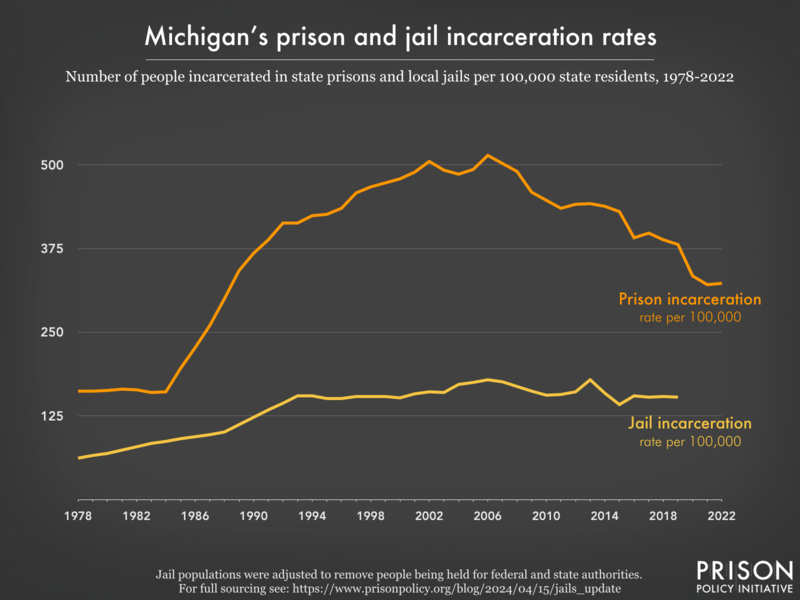
- total numbers rather than rates.
- Women’s prisons: Incarceration Rates | Total Population
- Men’s prisons: Incarceration Rates | Total Population
Today, Michigan’s incarceration rates stand out internationally

People of color are overrepresented in prisons and jails
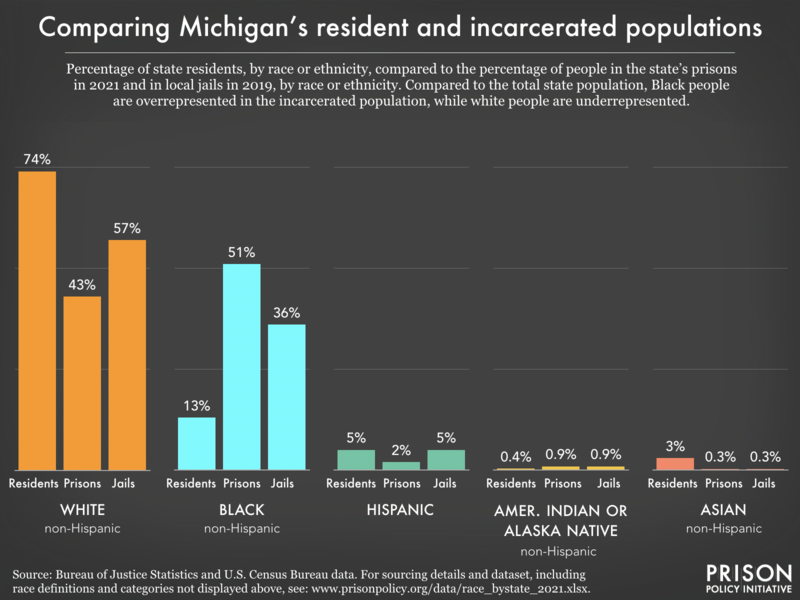
Michigan's criminal justice system is more than just its prisons and jails
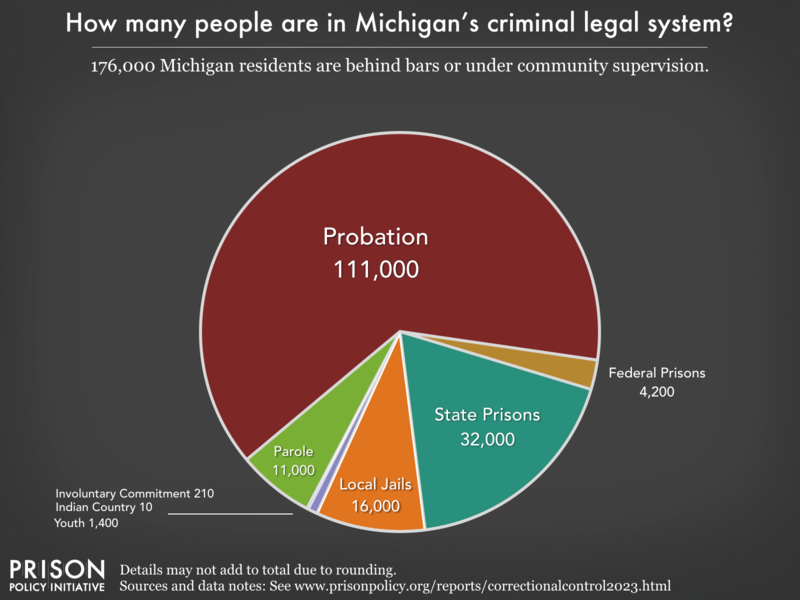
Reports and briefings about Michigan's criminal legal system:
Filter to show
- People on probation in Michigan are saddled with onerous rules and conditions they must follow every day or risk incarceration.
- Prisons in Michigan have tablets, but they may be being used to restrict incarcerated people’s access to books and sap them of the little money they have.
- With an incarceration rate of 535 per 100,000 residents, Michigan locks up a higher percentage of its people than almost any democratic country on earth.
- Prisons in Michigan force incarcerated people and their families — some of the most vulnerable members of society — to subsidize mass incarceration.
- 54% of people in Michigan jails have not been convicted of a crime, meaning they're legally innocent. There are simple steps the state can take to reduce this number. Why isn't it?
- New data shows that Michigan county jails charge steep prices for communication services while banning in-person visits and restricting mail
- Michigan releases roughly 227,621 men and 64,196 women from its prisons and jails each year. What is it doing to support them upon reentry?
- Wayne County, Michigan’s jail construction woes should serve as a warning to other communities around the nation.
- Michigan has a rare, mid-decade chance to end prison gerrymandering.
- People on parole in Michigan can be sent back to prison for "associating" with anyone who has a felony or misdemeanor conviction — even loved ones who are trying to support them
- The parole board in Michigan is releasing 33% fewer people and holding 22% fewer hearings since the pandemic started
- Black people in Michigan are incarcerated at a rate 6.5 times higher than white people.
- Michigan's choice to criminalize "failure to appear" may be hurting public safety
- The cost of incarcerating older people is incredibly high, and their risk of reincarceration is incredibly low, yet 15% of people in Michigan prisons are over the age of 55. Why is the state keeping so many older people locked up?
- Michigan is one of four states that provides privacy protections for incarcerated people communicating with members of the press.
- In Michigan, 53,000 people are incarcerated and another 122,000 are on probation or parole.
- Michigan charges up to 25¢ for an e-message to or from prison.
- Jails in Michigan charge up to $3.15 for a 15-minute phone call, reaping profits for companies, while prisons charge $2.10 for a 15-minute call.
- Michigan prisons are replacing incarcerated people's personal mail with scans, stifling family contact
- Michigan suspended its $5 medical copays in prisons at the beginning of the pandemic for flu related medical visits — but should eliminate them entirely.
- People in Michigan prisons must have an account balance of less than $11 to be eligible for a loan from the prison to purchase basic hygiene products and stamps — money they will have to pay back.
- Michigan prisons charge families up to a 20% fee to transfer money to an incarcerated loved one.
- We gave Michigan a failing grade in September 2021 for its response to the coronavirus in prisons.
- Otsego County: A cautionary tale for counties considering a big, costly new jail
- How many COVID-19 cases in Michigan communities can be linked to outbreaks in correctional facilities? (data from our report Mass Incarceration, COVID-19, and Community Spread)
- Michigan hurts jury diversity by excluding people with felony records
- We graded the parole release systems of all 50 states - Michigan gets a C-
- New data: Low incomes — but high fees — for people on probation in Michigan
- Michigan incarcerates women at a rate of 105 per 100,000 residents — higher than almost any democratic country on earth.
- People in Michigan prisons earn as little as 14¢ an hour for their work.
- Michigan is 1 of only 8 states still suspending driver's licenses for drug offenses unrelated to driving
- Michigan ACLU uses our map, testifies against harmful loitering bill
- Michigan spares most counties and municipalities from prison-based gerrymandering
- Fixing prison-based gerrymandering after the 2010 Census: Michigan, from Prison Policy Initiative's Fixing prison-based gerrymandering after the 2010 Census: A 50 state guide
Other resources
- Research on Michigan in our Research Library
- See our state campaign page.
